|
Huffman
Manufacturing Company in World War Two
Dayton, OH
1924-Current as Huffy Corporation in Miamisburg, OH
This page updated
11-13-2024.
An American Auto
Industry in World War Two Special Edition
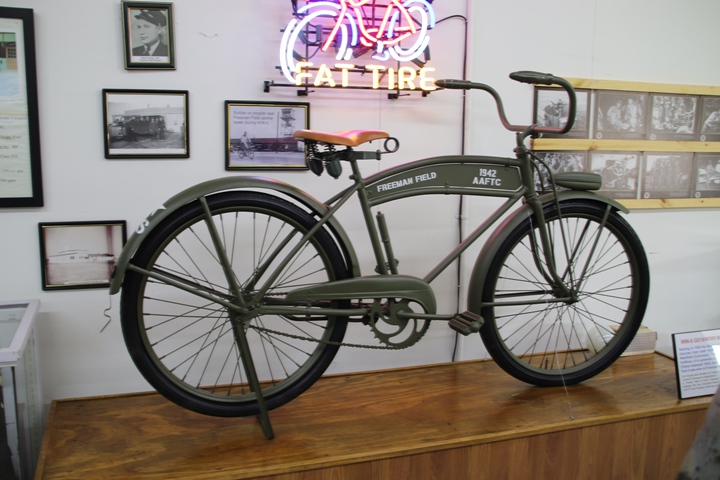
This is a rare example of 19,750 Huffman
Model 81 bicycles built by the Huffman Manufacturing Company of Dayton,
OH from 1942 through 1944. Of the three types of products built by
the company during the war, primers, measures, and bicycles, it is the
only product of which a few still exist. Table 1 shows that
$565,000 of the $1,488,000 Huffman had in major World War Two contracts
were for bicycles. This was 38% of the company's war contracts.
Information from Table 2 shows that Huffman built a total of 20,270
bicycles for the war effort. The average cost of each bicycle was
$27.87. This Model 81 is on display at the Freeman Army Airfield
Museum located at the Freeman Municipal Airport in Seymour, IN was built
in 1943. Author's photo.
Table 1 - Huffman Manufacturing
Company's Major World War Two Contracts
The information below
comes from the "Alphabetical Listing of Major War Supply
Contracts, June 1940 through September 1945." This was
published by the Civilian Production Administration,
Industrial Statistics Division. |
|
Product |
Contract Amount |
Contract Awarded
|
Completion
Date |
|
Primers |
$334,000 |
January 1942 |
August 1942 |
|
Primers |
$201,000 |
April 1942 |
December 1942 |
|
Primers |
$176,000 |
April 1942 |
October 1943 |
|
Measures |
$135,000 |
November 1942 |
November 1943 |
|
Bicycles |
$399,000 |
April 1943 |
October 1943 |
|
Bicycles |
$96,000 |
July 1943 |
November 1943 |
|
Bicycles |
$70,000 |
October 1943 |
March 1944 |
|
Steel Measures |
$77,000 |
May 1944 |
February 1945 |
|
Total |
$1,488,000 |
|
|
Table 1 shows that the Huffman Manufacturing
Company, like many others during World War Two, made products totally
different from its pre-war product line, which was service station
equipment and bicycle rims. These were the original product lines
of the company when it was started in 1924 by Horace M. Huffman, Sr.
It was not until 1934 that Mr. Huffman added bicycles to his company's
product line after realizing there was a growing market for them during
the depression.
A month after the Japanese attack on Pearl
Harbor, Huffman was given its first of three contracts for artillery
shell primers. The three contracts totaled $711,000 or 48% of its
total war production. It was not until 1943 that the company was
given a contract to produce bicycles for the United States Army which
was 38% of its World War Two output.
Table 2 -
Huffman Manufacturing Company Bicycles
Accepted by Detroit Ordnance, US Army
The information below comes from "Summary Report of
Acceptances, Tank-Automotive Material, 1940-1945."
Published by Army Services Forces, Office, Chief of
Ordnance-Detroit, Production Division, Requirements and
Progress Branch,
January 21, 1946. |
|
Type |
Model Number |
1942 |
1943 |
1944 |
Total |
| Bicycle |
81 |
2,556 |
13,853 |
3,341 |
19,750 |
| Folding Bicycle |
HF-777 |
|
500 |
|
500 |
| Total |
|
2,556 |
14,383 |
3,341 |
20,270 |
Today the company started by Mr. Huffman
almost 100 years ago has been renamed Huffy and markets an extensive
line of Chinese-built bicycles, electric riding toys, and electric
scooters. The company no longer manufactures its products in the
United States. Its headquarters is in Miamisburg, OH.
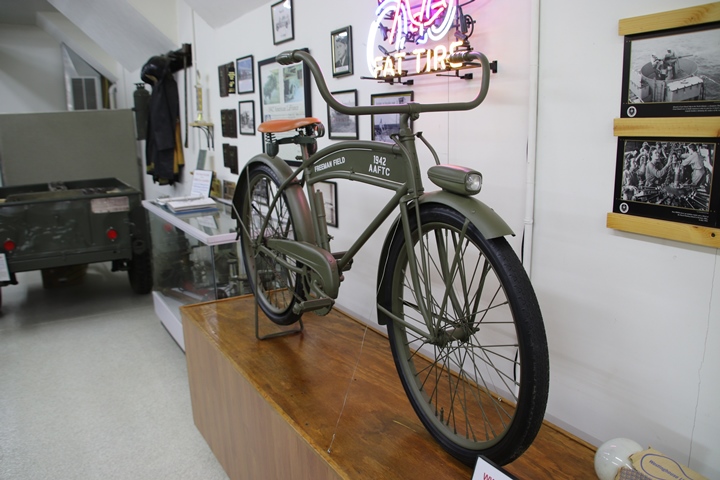
The bicycle was donated to the museum in
2018. Author's photo.
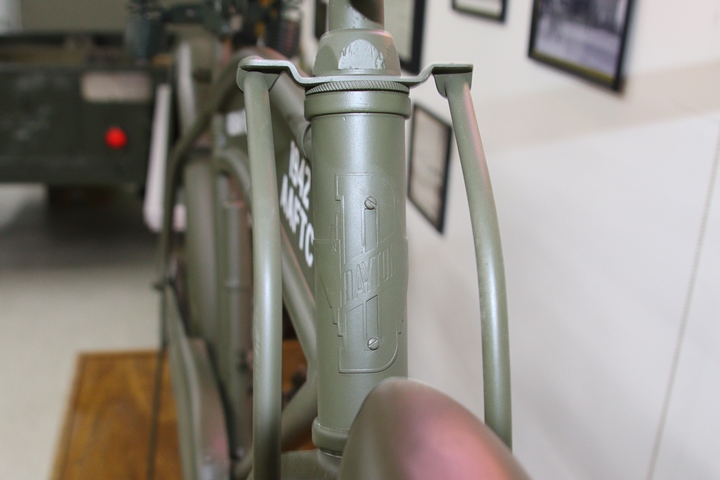
The Dayton nametag was used on Huffman
bicycles until 1949. Author's photo.
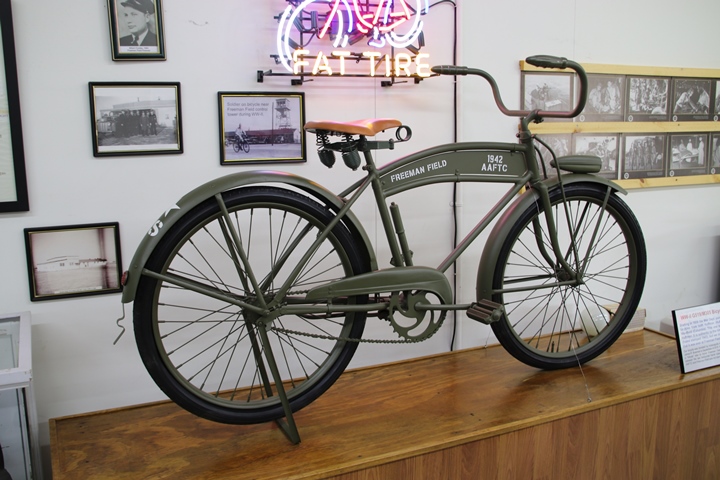
The "Freeman Field" name was added to the
bicycle due to its inclusion and display at the Freeman Army Airfield
Museum. It is unknown where this bicycle served during World War
Two. Author's photo.
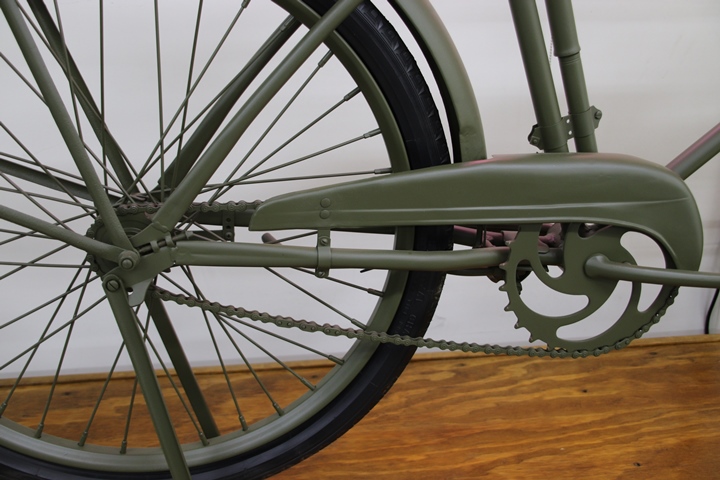
One of the identifiers of a Huffman
World War Two bicycle is the swirl design of the pedal sprocket.
The other manufacturer of World War Two bicycles, Westfield, had pedal
sprockets with a radial design. Author's photo.
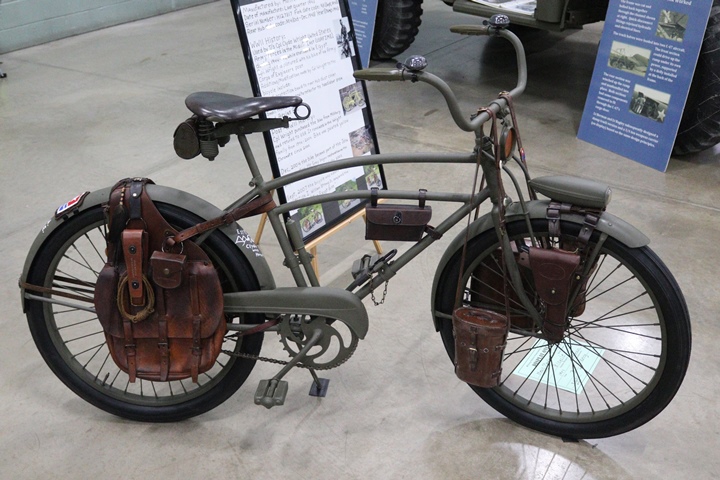
How cool is this? This Huffman bicycle
was purchased after World War Two by the soldier who used it in Egypt
during the war. See the information on this one-of-a-kind Huffman
bicycle in the photo below. This was on display at the 2019 MVPA
National Convention in York, PA. Author's photo.
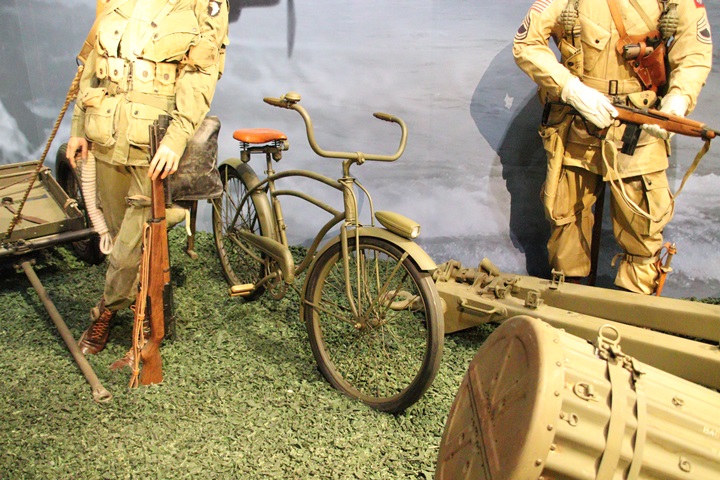
This Huffman Manufacturing Model 81 is on
display at the National Museum of Military Vehicles in Dubois, WY.
It is part of a diorama depicting American paratroopers at the Normandy
landings of June 6, 1944. Author's photo added 11-13-2024.
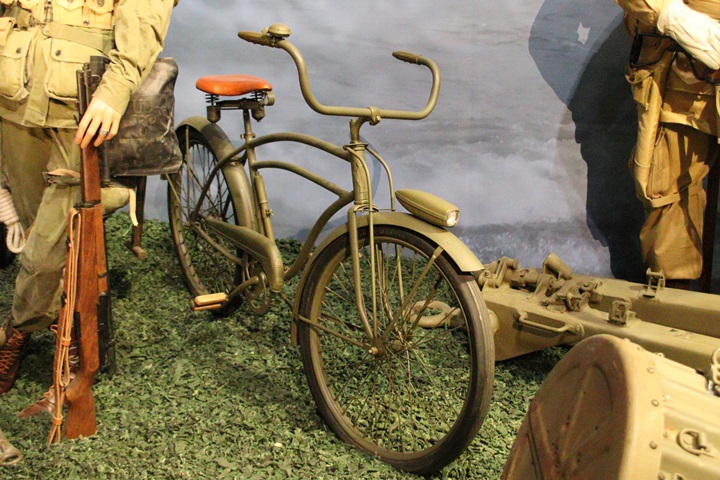
Author's photo added 11-13-2024.
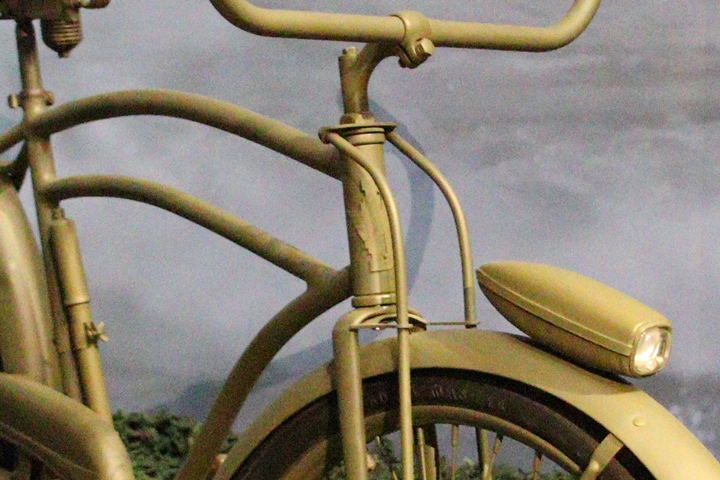
This enlargement of the previous photo shows the same type of nameplate as
the Huffman Model 81 on display at the Freeman Army Airfield Museum
shown previously. Author's photo added 11-13-2024.
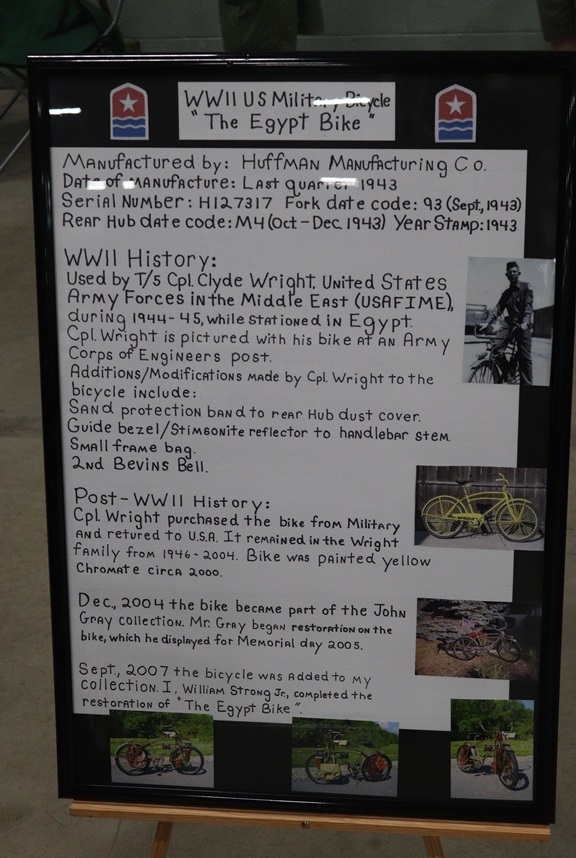
This may be the only World War Two era
Huffman bicycle for which the entire life history is known.
Author's photo.
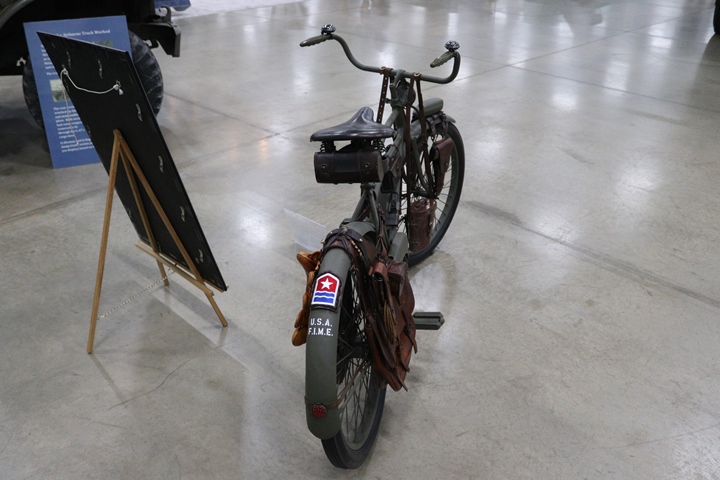
Author's photo.
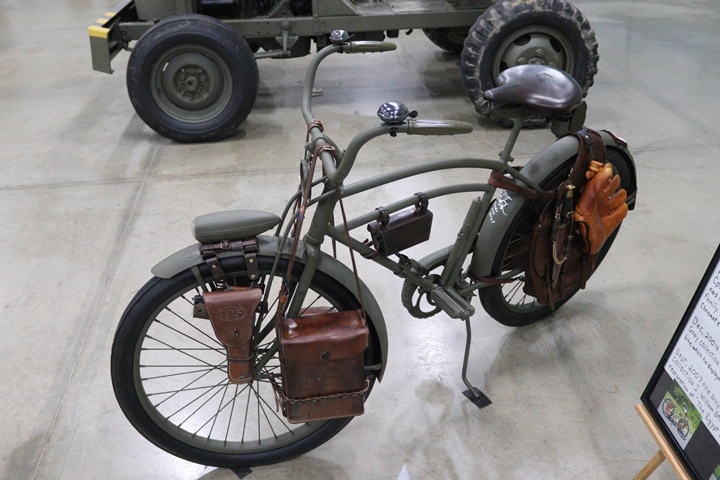
Author's photo.
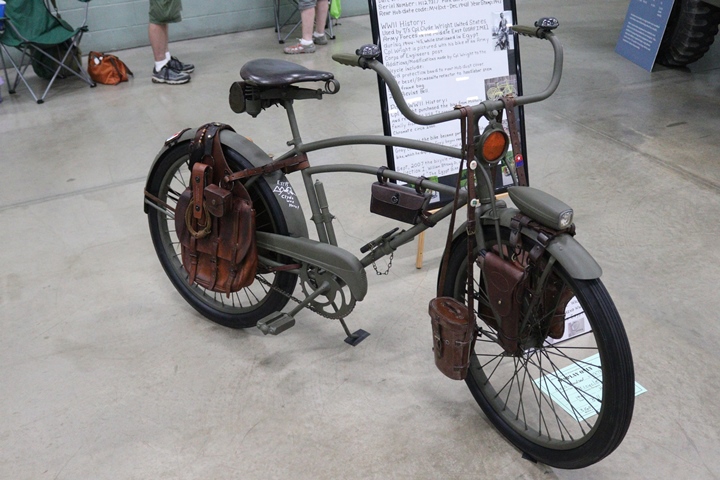
Author's photo.
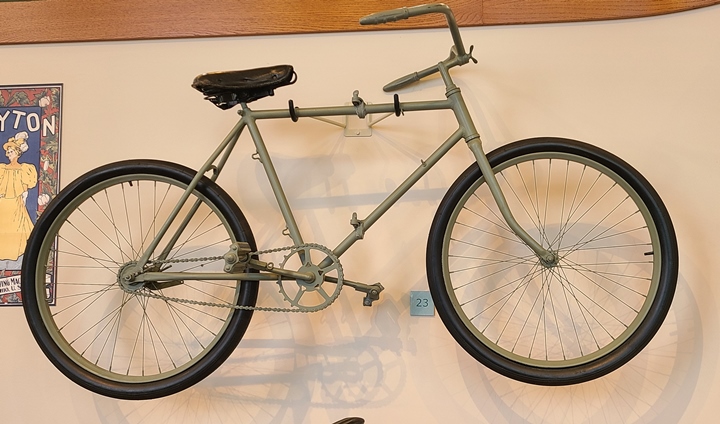
In 1943 Huffman made a production run of 500
Model HF-771 lightweight folding bicycles for paratrooper use. As
can be seen, the bicycle did not have fenders nor a chain guard to reduce
its weight. Of the 500 built, this is the only known surviving
example and is part of the bicycle display at the Carillon Historical
Park in Dayton, OH.
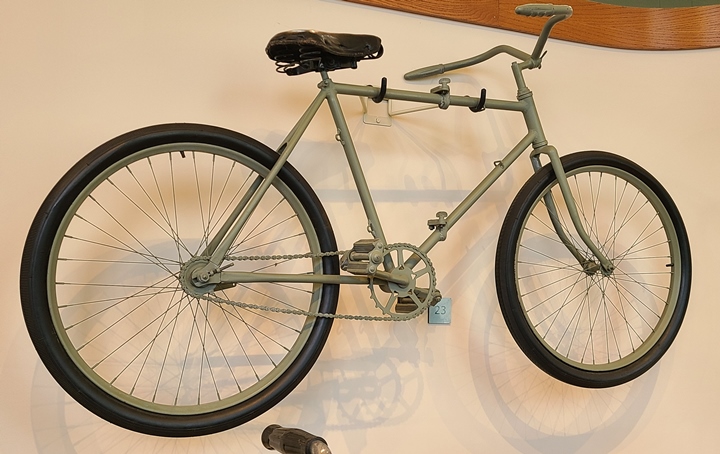
This example is a gift from Huffy to the Carillon Historical Park.
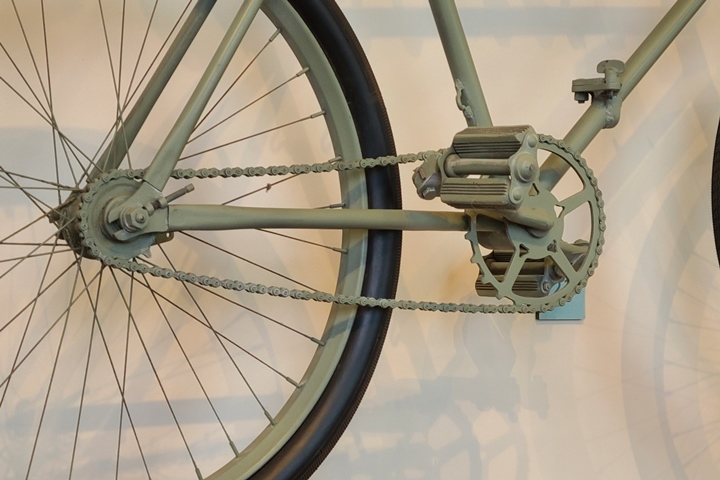
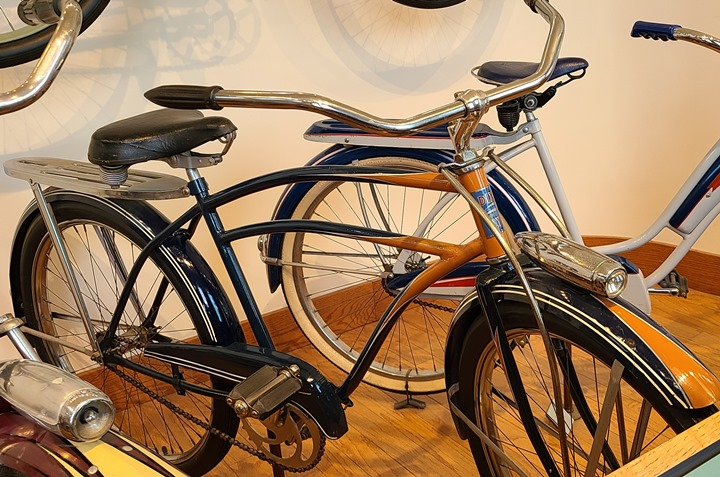
If World War Two had not shut down
production of civilian bicycles, Huffman would have produced many 1942
Dayton Flyers like this one on display at Carillon Historical Park.
When civilian production stopped, the company was operating on three
shifts making bicycles.
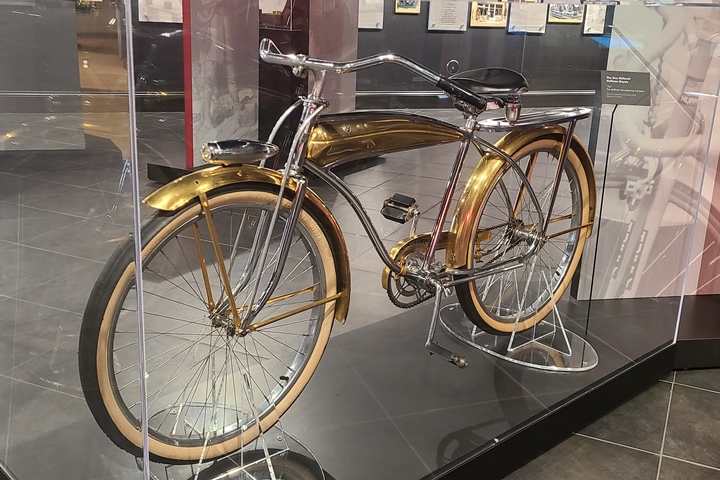
The Carillon Historical Park also has this special Huffman-built bicycle
on display, on loan from the Henry Ford Museum. This was Huffman's
millionth bicycle built on May 13, 1947. It was made with a chrome
frame plated
with 14-karat gold.
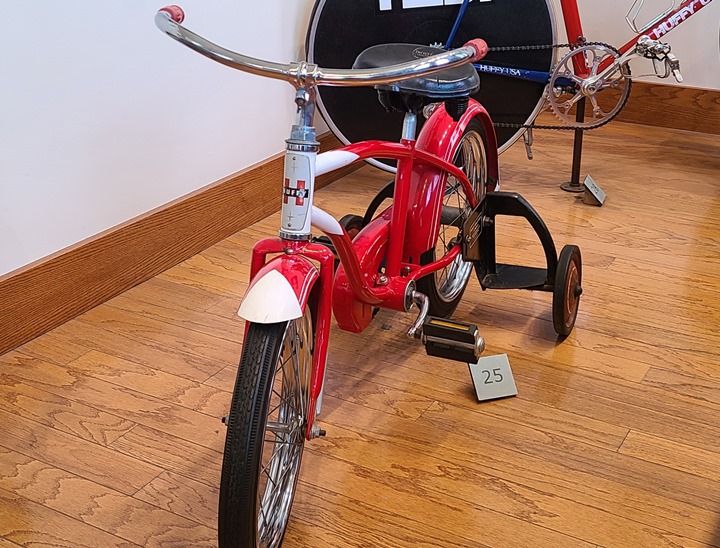
I remember training wheels on my first
bicycle when I was learning to ride. However, not many years
before I used training wheels, Huffman led their introduction in 1951.
I had just assumed they had always been around. I was one of the
first generation to learn on them.
The Huffman Manufacturing Company plant:
The World War Two era Huffman factory was located on the east side of
Dayton, OH at the south end of Gilbert Avenue.
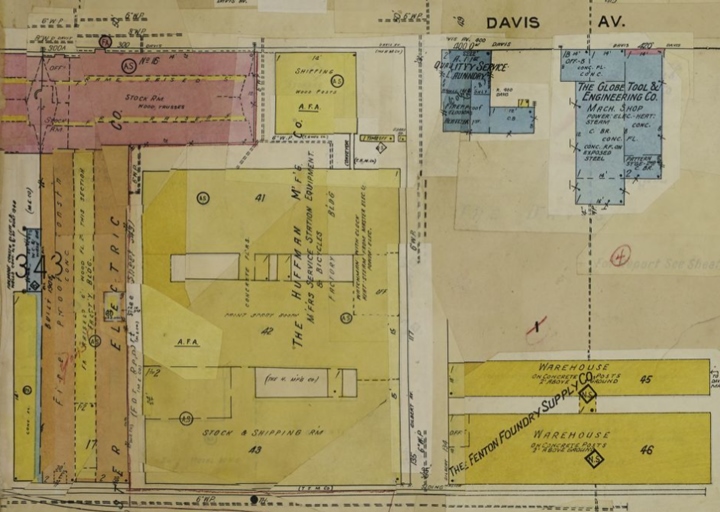
This Sanborn fire map shows the location of
the Huffman plant on Gilbert Avenue south of Davis Avenue.
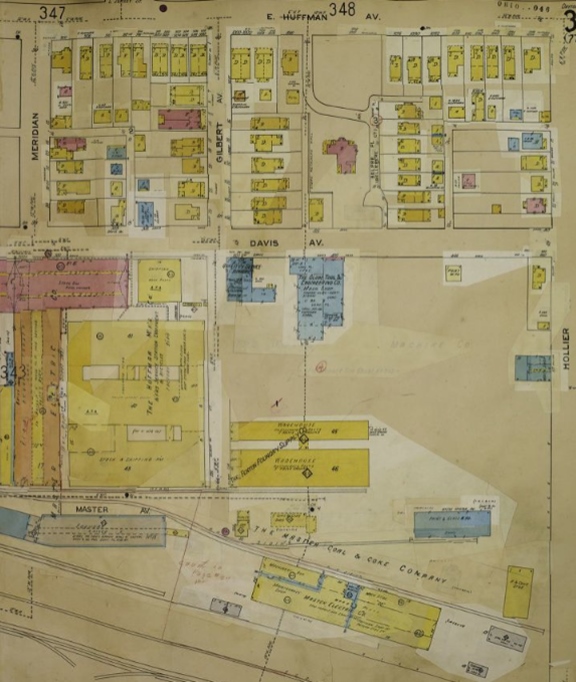
This larger Sanborn map of the area shows a
residential area to the north of the factory and the Pennsylvania
Railroad to the south of the plant.
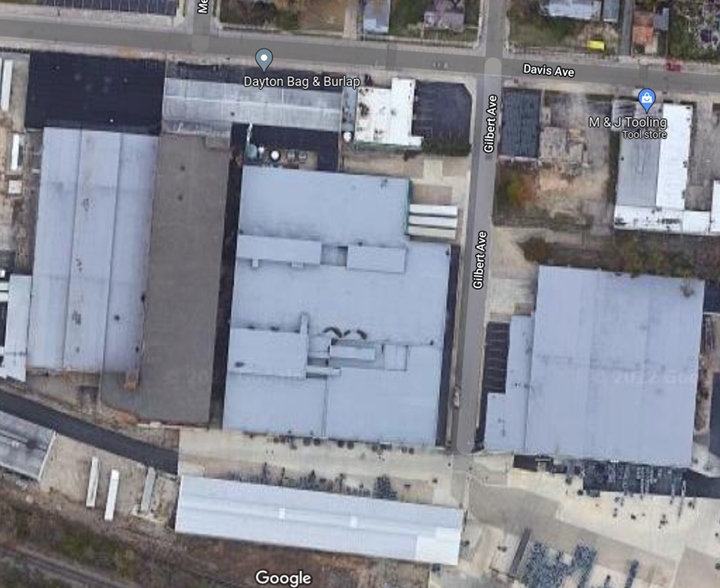
A current Google Maps satellite view of the
facility shows that Dayton Bag & Burlap now occupies both plants
previously owned by the Huffman Manufacturing Company and Master
Electric Company. While the Sanborn maps show the two former
factories to be separated, this view shows that the two have been
connected and both are part of the same complex. Also, the Sanborn
maps show Gilbert Avenue as a true north-south street; the Google
satellite view shows this is not correct.
The Davis Sewing Machine Company:
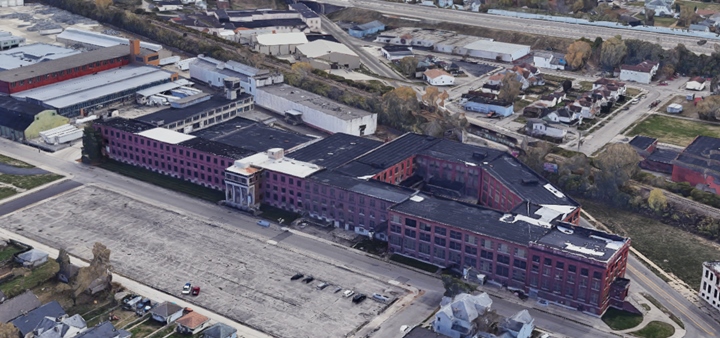
This company is acknowledged by historians as being the predecessor of
the Huffman Manufacturing Company. It was owned by George P.
Huffman, father of Horace M. Huffman, Sr. Originally started in
Watertown, NY in 1868, George Huffman moved his company to Dayton, OH in
1889 and moved into a factory complex at Linden and Davis Avenues.
At the height of its business cycle, the company employed 2,000 workers
and produced 128,000 sewing machines per year. However, the
company exited the sewing machine business and focused on bicycle
production as the bicycle became popular in the United States. In
1925 the company was sold, and the profits were used to start the Huffman
Manufacturing Company.
The photo shows the Davis factory complex
looking southeast. The location of the Huffman Manufacturing
Company is at the very far left, or east, of the photo.
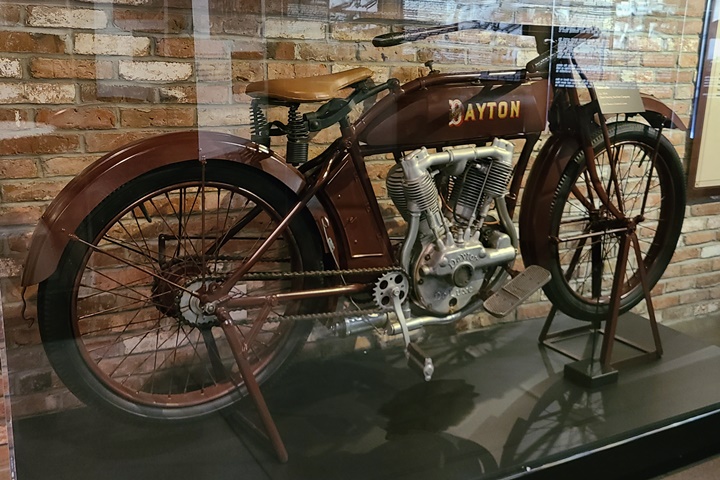
The Davis Sewing Machine Company also made
motorcycles like this 1917 model.
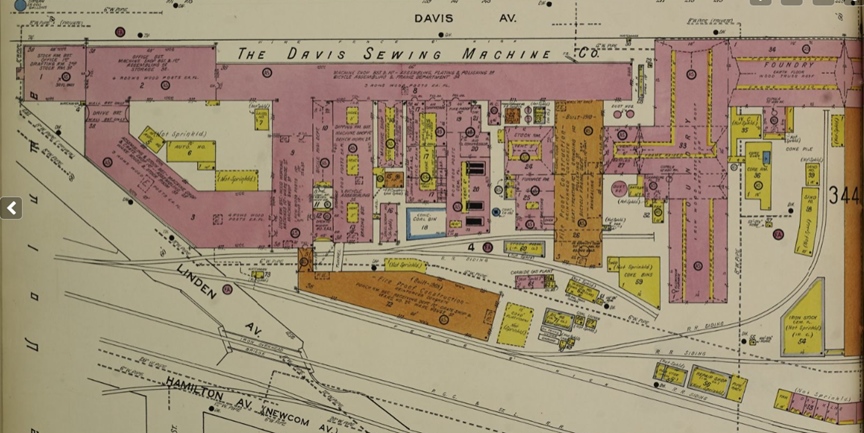 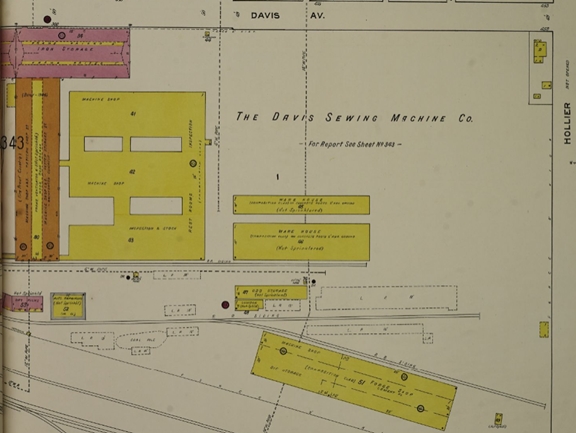
This Sanborn fire map also shows the Davis
Sewing Machine factory complex.
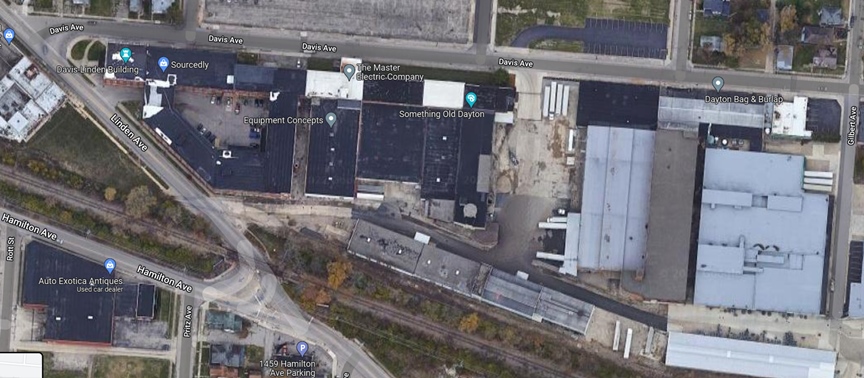
This Google Maps satellite view shows the
location of the former Davis Sewing Machine Company at the left and the
Huffman Manufacturing Company at the right. Both companies were
located in the same industrial area of Dayton, OH.
|


























